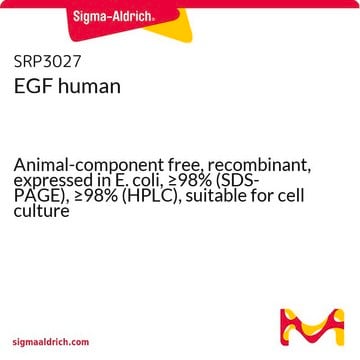H4791
BMP2, human
BMP-2, recombinant, expressed in HEK 293 cells, HumanKine, suitable for cell culture
Sinonimo/i:
Bone Morphogenetic Protein 2 human, BMP-2
Scegli un formato
CHF 350.00
Scegli un formato
About This Item
CHF 350.00
Prodotti consigliati
Nome del prodotto
Bone Morphogenetic Protein 2 human, BMP-2, recombinant, expressed in HEK 293 cells, HumanKine, suitable for cell culture
Origine biologica
human
Livello qualitativo
Ricombinante
expressed in HEK 293 cells
Stato
lyophilized powder
Potenza
≤60 ng/mL EC50
Qualità
endotoxin tested
PM
dimer 30-38 kDa (glycosylated)
Confezionamento
pkg of 10 μg
Condizioni di stoccaggio
avoid repeated freeze/thaw cycles
tecniche
cell culture | mammalian: suitable
Impurezze
≤1 EU/μg Endotoxin level
N° accesso UniProt
Temperatura di conservazione
−20°C
Informazioni sul gene
human ... BMP2(650)
Cerchi prodotti simili? Visita Guida al confronto tra prodotti
Descrizione generale
Azioni biochim/fisiol
Stato fisico
Nota sulla preparazione
Risultati analitici
Note legali
Codice della classe di stoccaggio
11 - Combustible Solids
Classe di pericolosità dell'acqua (WGK)
WGK 3
Punto d’infiammabilità (°F)
Not applicable
Punto d’infiammabilità (°C)
Not applicable
Scegli una delle versioni più recenti:
Possiedi già questo prodotto?
I documenti relativi ai prodotti acquistati recentemente sono disponibili nell’Archivio dei documenti.
I clienti hanno visto anche
Articoli
Hydrogel-based biomaterials for cell delivery and tissue regeneration applications are discussed.
Active Filters
Il team dei nostri ricercatori vanta grande esperienza in tutte le aree della ricerca quali Life Science, scienza dei materiali, sintesi chimica, cromatografia, discipline analitiche, ecc..
Contatta l'Assistenza Tecnica.






